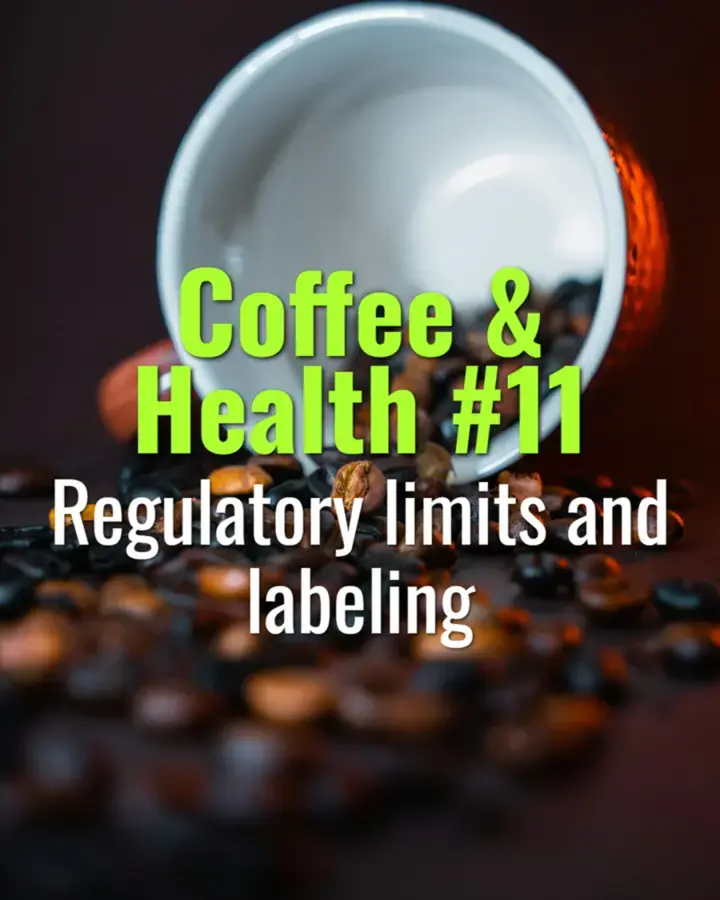Regulatory limits and labeling
The regulatory standards for caffeine content, safety limits, and labeling requirements that affect coffee products worldwide.
- Coffee Basics Nerds
- 2 min read

Caffeine Safety Limits
- European Food Safety Authority (EFSA):
- Up to 400 mg/day safe for most healthy adults.
- Single doses ≤200 mg pose no safety concern.
- Pregnant/breastfeeding: ≤200 mg/day.
- U.S. FDA: Similar recommendation of ≤400 mg/day.
- Athletic Context: Caffeine no longer banned by WADA (World Anti-Doping Agency), but monitored for performance enhancement.
Labeling Requirements
-
Prepackaged Coffee Beverages:
-
Many regions (EU, US, Canada) require caffeine content labeling for energy drinks, but not always for coffee.
-
Voluntary labeling is becoming more common in specialty RTD (ready-to-drink) coffee.
-
Allergen & Additive Labeling:
-
Milk, soy, nuts in flavored drinks must be clearly indicated.
-
Artificial sweeteners, colors, and preservatives must be declared where used.
Decaf Regulations
- To be labeled “decaffeinated,” coffee must have ≥97% caffeine removed (US standard) or ≤0.1% caffeine in dry matter (EU standard).
Food Safety Standards
- Mycotoxin Limits: EU sets strict limits on ochratoxin A in roasted and instant coffee.
- Pesticide Residues: Maximum residue levels (MRLs) regulated for imported green coffee.
- Organic Certification: Requires compliance with farming and processing standards.
Country Variability
- Japan: Strong focus on caffeine warnings for sensitive populations.
- EU: Harmonized regulations on contaminants and food safety.
- US: Less strict caffeine labeling, more reliance on general FDA guidelines.
Practical Implications for Cafés & Roasters
- Transparency in caffeine levels builds trust.
- Specialty brands increasingly highlight caffeine content per serving.
- Awareness of import standards essential for green coffee buyers.
Summary
Regulatory bodies set safe daily limits for caffeine (~400 mg/day) and enforce rules on decaf standards, allergens, contaminants, and additives. While caffeine labeling on brewed coffee isn’t always mandatory, transparency is growing—especially for packaged and specialty products.